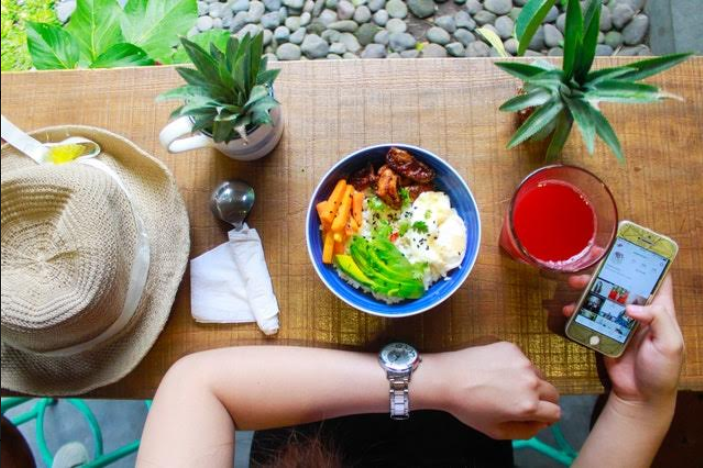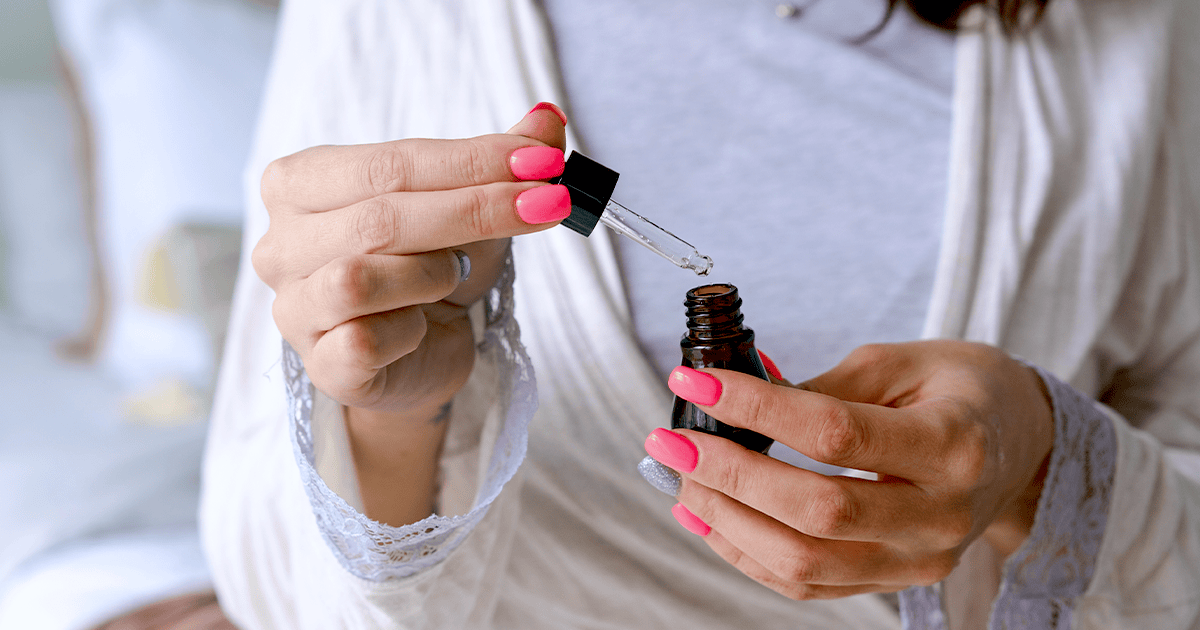Dr Sarah Brewer shares her expert advice for type 2 diabetics, discussing beneficial foods and items with hidden sugars to avoid.
Dr Brewer works on the medical advisory board for CuraLin, the all-natural supplement that helps people with diabetes balance their blood sugar levels, naturally.
Beneficial Foods for Diabetes:
Almonds are a good source of monounsaturated fats, vitamin E and antioxidant flavonol glycosides. Eating a handful (68g/2.4oz) per day lowers LDL-cholesterol and raises HDL-cholesterol enough to reduce the risk of coronary heart disease and stroke by 12%.
Apples are one of the richest dietary sources of antioxidant flavonoids. Flavonoids can prevent the progressive impairment of pancreatic beta-cell function due to oxidative stress in type 2 diabetes. A study involving 38,000 women found those eating at least one apple a day were 28% less likely to develop type 2 diabetes than those eating no apples.
Dark chocolate is a rich source of antioxidant flavanols. Only select dark chocolate containing at least 70% cocoa solids, or drink unsweetened cocoa. 100g/3.5oz dark chocolate (at least 70% cocoa solids) per day can lower blood pressure by 5.1/1.8 mmHg. Dark chocolate has also been shown to decrease insulin resistance. Cocoa extracts can significantly lower glucose levels.
Cinnamon contains substances that promote secretion of insulin from beta-cells in the laboratory. 1g per day can improve blood glucose levels by 10% in people with type 2 diabetes.
Yellow/orange fruit & vegetables are rich sources of antioxidant carotenoids (eg carrots, sweet potatoes, guava, mango, pumpkin) People with the highest intake of carotenoids are half as likely to have poor glucose tolerance than those with low intakes.
Garlic is a source of allicin which lowers blood pressure, cholesterol and makes arteries more elastic, plus ajoene which helps to lower blood glucose levels. Aged garlic also contains potent antioxidants such as s-allylcysteine. 2.7g/0.1oz fresh cloves per day (two to three cloves) can lower LDL-cholesterol enough to cut your risk of a heart attack or stroke by 25%. Ajoene can lower glucose levels by 25%.
Aged garlic inhibits formation of glycated proteins. Recent research suggests that garlic oil improves glucose tolerance and can decrease protein loss through the kidneys.
Ginger contains gingerol, zingerone and essential oils. Gingerol reduces blood clotting, boosts circulation and lowers blood pressure. Research suggests ginger increases insulin secretion and increases insulin-sensitive glucose uptake in fat (adipose) cells. Preliminary research suggests it may also reduce diabetes-related kidney damage.
Grapefruit contain antioxidants, with red grapefruit having a higher flavonoid and anthocyanin content. Grapefruit interacts with several prescription drugs, including statins – check medication insert sheets. Both blond and red grapefruit lower LDL-cholesterol (7% for blond, 15% for red), while red grapefruit lowers triglycerides by 17% (5% for blond).
Grapes, especially lack grapes, are rich sources of antioxidant anthocyanadins such as resveratrol. Compounds found in red grapes can significantly increase levels of protective, antioxidant glutathione in pancreatic cells and increase insulin production in type 2 diabetes.
Jerusalem artichokes contain the enzyme, inulase, and a complex sugar, inulin, made up of units of fructose giving it a low glycemic index Inulin and inulase may help to stabilize glucose levels, especially when combined with higher GI foods.
Olive oil is a good source of monounsaturated fats and antioxidants: vitamin E carotenoids and polyphenols. A diet rich in olive oil has been shown to reduce blood pressure, and the risk of coronary heart disease by 25%. Following an olive-oil rich Mediterranean-style diet is predicted to prevent over 90% of type 2 diabetes, 80% of coronary heart disease and 70% of stroke when combined with regular physical activity and not smoking.
Oranges – especially the red ‘blood’ oranges have high levels of antioxidant vitamin C, anthocyanidins and flavones. Cyanidin-3-glucoside and delphinidin-3-glucoside found in red oranges were recently shown to promote insulin secretion to improve glucose tolerance.
Pomegranate is an unusually rich source of polyphenols and anthocyanin antioxidants. Pomegranate juice lowers LDL-cholesterol and can reduce systolic blood pressure by 5% when drunk daily. Consumption of pomegranate juice does not worsen glucose tolerance but significantly raises the antioxidant content of immune cells.
Spices contain a variety of oils and antioxidants that are beneficial for glucose control. Fenugreek, turmeric, cumin, coriander seeds, mustard seed, curry leaves are all reputed to have hypoglycemic effects.
Tea – especially green and white tea – contains antioxidant catechins that increase insulin sensitivity. People with type 2 diabetes who drank 1500 ml oolong tea daily for 30 days reduce blood glucose levels by 30% compared with a similar period when drinking water. A study involving 38,000 women found that those drinking 4 or more cups of tea per day were 27% less likely to develop type 2 diabetes than those drinking none.
Tofu made from isoflavone-rich soy protein. Silken, Japanese-style tofu (kinugoshi) includes a seaweed extract called nigari. Among postmenopausal women, those consuming the most tofu and other soy products were half as likely to develop glycosuria (sugar in the urine) than those consuming the least.
A soy-based diet has been shown to improve kidney function in both young adults with type 1 diabetes, and older people with type 2 diabetes, as well as lowering LDL-cholesterol by 9%.
Tomatoes are a rich source of lycopene, an antioxidant red pigment which is released in higher quantities when cooked. Lycopene reduces platelet clumping to help protect against the abnormal blood clotting linked with heart attack and stroke. Drinking tomato juice can protect against oxidation of LDL-cholesterol almost as effectively as high dose vitamin E supplements in people with type 2 diabetes.
Walnuts are a rich source of omega-3 fatty acids that have a beneficial effect on blood fat levels. Regular consumption of 30g walnuts per day can lower LDL-cholesterol enough to decrease the risk of a heart attack by 30% – 50% . Eating 84g walnuts daily for four weeks reduced total cholesterol level by 12% more than a control group not eating walnuts; LDL-cholesterol was reduced by 16%.
Hidden Sugars to watch out for:
Low Fat Yogurt – A low fat fruit yogurt may have added sugar to provide flavour as well as ‘mouth feel’. A 6oz (170g) yogurt can contain as much as 32g sugar. Check labels and select the yogurt with the lowest amount of sugar. A 150g pot of Greek style plain yogurt made from whole milk typically provides around 5g sugar, for example – add flavour with fresh berries, nuts or a tablespoon of unsweetened muesli.
My favourite Fage Total yogurt (5% fat) has no added sugar and contains only naturally occurring milk sugar (lactose) provides just 3g sugar (plus 9g protein) per 100g and is delicious and creamy enough to eat on its own.
Tomato Soup – A single serving of savoury, tinned tomato soup can contain as much as 12g free sugar (3 teaspoonfuls). Compare labels on tins or packs, or better yet, make your own from fresh chopped tomatoes (coming into season now), onion, carrot, celery, vegetable stock and plenty of fresh herbs.
Flavoured Water – Water flavoured with fruit and added vitamins and minerals is bound to be healthy, right? Not necessarily. Some brands contain as much as 13g sugar per serving (237g). Make your own by adding slivers of cucumber, chopped fresh mint and/or slices of lime to a jug of water instead. You can also buy drink bottles with separate slots into which you can place your fresh fruit.
Cereal Bars – There has been a lot of publicity around the amount of sugar found in some breakfast cereals. Sugar-frosted cornflakes can contain 11.5g sugar per 30gram serving, for example, while granola with dried fruit, nuts or seeds, which sounds healthy, can have almost 11g sugar per 60g serving, too. It’s therefore not surprising
that some seemingly healthy cereal bars can pack lots of sugar, too.
A small, fruit-filed grain bar (37g) can contain 13g sugar while a larger (116g) bar can provide a whopping 39g sugar. Best advice if you want to cut back on sugar is to check labels, select those with the lowest sugar and energy values overall, cut back on serving sizes (or at least don’t super-size) and if you have a sweet tooth, retrain it so you need less sugar or artificial sweeteners.
Dr Brewer recommends joining the CuraLin Facebook Community:
If you or friends are diabetic then you might be dealing with both the physical impact of type 2 diabetes as well as the mental side of it too. From doctor appointments, to restricting your diet, the restraints and worries of the disease can have a huge effect.
Luckily, online communities exist that offer extra support from individuals who are experiencing the same thing! CuraLin has a wonderful community on Facebook with over 10,000 memebers who are sharing their successes and tips, search ‘winning type 2 diabetes together’ to join.
Try CuraLin:
CuraLin (RRP £59.00, www.curalife.co) is a specially tailored natural formula that promotes healthy and balanced blood sugar levels and insulin production in those suffering from Type 2 Diabetes. The nutritional supplement is made from a mixture of ten natural ingredients, which work with the body to help balance the blood sugar profile
Dr Sarah Brewer recommends CuraLin for those suffering with type 2 diabetes due to the positive effects reported and measured by its users. Dr Brewer explains, “The blend of 10 Ayurvedic herbs within CuraLin have a range of beneficial effects on glucose control and metabolism.
As a result, users report that their glucose control quickly improves and, in some cases, normalises within 4 weeks. Users also report reduced cravings for sweet food, and experience improved energy, sleep and general quality of life.





